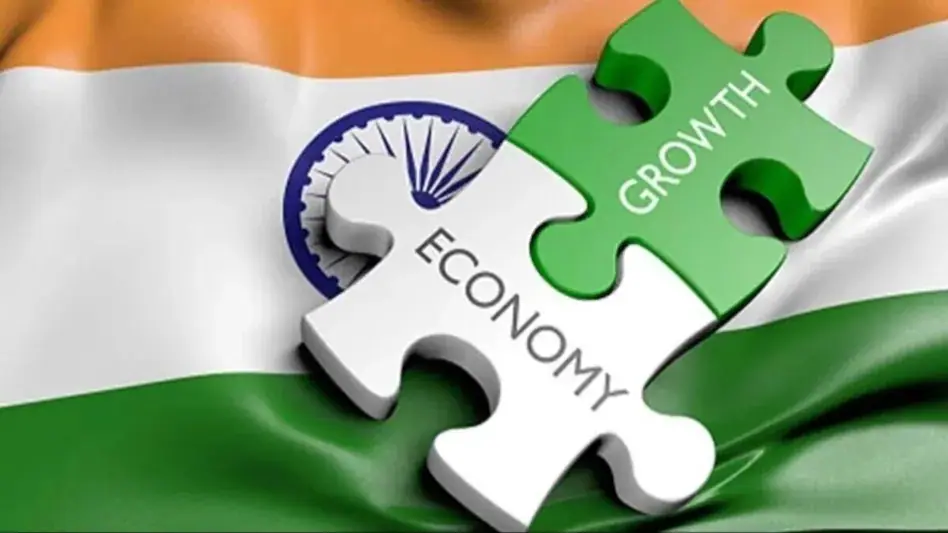
India’s Economic Forecast for FY26
India’s Economic Forecast for FY26 – Domestic Challenges Amid Global Uncertainty
CLAT Current Affairs 2026 | Best Online Coaching for CLAT | Online Coaching for CLAT
Why in News
India’s GDP for FY 2024-25 showed a solid 6.5% growth, and projections for FY 2025-26 are optimistic. However, global headwinds and structural domestic issues—such as weak private investment, sluggish consumption, and trade uncertainties—continue to pose hurdles. While India remains one of the fastest-growing major economies, the overall global scenario, as per IMF and RBI projections, reflects a complex economic environment.
This development is crucial for CLAT and UPSC aspirants due to its direct link with current economic policies, fiscal reforms, and global economic diplomacy. It also serves as a critical topic for legal reasoning questions involving fiscal responsibility and governance.
Introduction
The Indian economy has shown resilience, growing at 6.5% in FY24-25, aided by government infrastructure spending and a rebound in services. However, familiar domestic challenges—including underwhelming private capital expenditure (capex), muted household consumption, and a negative credit impulse—are back in focus.
Meanwhile, global uncertainties, such as the US-China trade tensions, disruptions in supply chains, and policy rate movements in developed economies, have further complicated India’s economic outlook.
Point-Wise Summary for CLAT and UPSC Aspirants
- GDP Performance & Forecast
- FY 2024-25 (India): 6.5% real GDP growth.
- FY 2025-26 Projection (India): Between 6.0%–6.5%, supported by services, consumption, and selective capex.
- IMF World GDP Forecast: 2.8% in 2025 and 3.0% in 2026 (April projection).
- China’s Forecast: 4.0% in 2025, declining to 3.6% in 2026.
- US Forecast: 1.8% in 2025 and 1.7% in 2026.
- Domestic Economic Challenges
- Weak private capex despite policy incentives.
- Patchy rural recovery with inconsistent agricultural performance.
- Slowdown in household consumption, especially in lower-income groups.
- Muted credit demand, with banking system showing cautious lending.
- Balance sheet issues in households and corporates—household debt remains a concern.
- Global Uncertainty Factors
- Trade tensions with the US may limit foreign investment.
- China’s structural slowdown creates new regional dynamics.
- Weakening US economy may impact exports and global demand.
- Volatility in energy prices and geopolitical risks (including Pakistan and West Asia).
- Structural Constraints and Delayed Reforms
- Post-GST and Insolvency Code reforms brought partial relief but not a full turnaround in corporate capex.
- The 2019 corporate tax cut (from 30% to 22%) boosted short-term profits but failed to accelerate investment cycles.
- Reforms in labour, land, and credit access have slowed or stalled.
- Consumption tax reliefs announced recently have not yielded expected boosts.
- Government Expenditure and Capex
- Continued focus on public infrastructure spending.
- Reliance on government push due to stagnant private investment.
- Limited fiscal space for more rate cuts or large-scale relief packages.
- Monetary Policy and RBI Intervention
- RBI cut rates by 100 basis points since February 2025.
- Latest cut of 50 bps announced in June 2025.
- Limited scope for further rate cuts due to already low repo rate levels.
- Despite rate cuts, borrowing costs remain high for industry due to risk aversion by banks.
- Employment and Consumption Risks
- Job growth lags behind GDP growth.
- India needs to generate 8 million+ jobs annually to keep up with demographics.
- Informal sector stress and urban unemployment remain concerns.
- Private capex and job creation are tightly linked and both remain under strain.
- 🇮🇳 Election Year and Policy Push
- The 2025 state election calendar was seen as an opportunity to push reforms.
- Halfway into the year, however, appetite for large structural reforms is low.
- Labour code reforms and land acquisition laws have not progressed.
- Opportunities Amid Challenges
- Potential trade realignments could benefit India.
- Companies diversifying away from China may increase FDI inflows to India.
- Services sector—especially IT, fintech, health, education—shows strong resilience.
Table Summary: GDP Growth Projections
Country/Economy | 2025 (Apr) | 2025 (Jan) | 2026 (Apr) | 2026 (Jan) |
World | 2.8% | 3.0% | 3.0% | 3.3% |
India* | 6.2% | 6.5% | 6.0% | 6.5% |
US | 1.8% | 2.7% | 1.7% | 2.1% |
China | 4.0% | 4.6% | 3.6% | 4.0% |
Euro Area | 0.8% | 1.0% | 1.2% | 1.4% |
UK | 1.3% | 1.6% | 1.4% | 1.5% |
Japan | 0.6% | 1.0% | 0.6% | 0.8% |
Mexico | -0.3% | 1.4% | 1.4% | 2.0% |
Brazil | 2.0% | 2.2% | 2.2% | 2.4% |
South Africa | 1.0% | 1.5% | 1.3% | 1.6% |
Legal and Constitutional Angle
Article 38 (Directive Principles)
- Emphasizes that the State must strive to minimize income inequalities and ensure economic justice.
Article 39(c)
- The State shall ensure that concentration of wealth and means of production do not become detrimental to public interest.
FRBM Act (Fiscal Responsibility and Budget Management Act)
- Limits fiscal deficit targets for macroeconomic stability.
- Has been relaxed during pandemic and post-recovery periods to allow higher public capex.
IBC (Insolvency and Bankruptcy Code)
- Introduced in 2016, aims to resolve corporate debt quickly.
- Though successful in some cases, it has faced delays and challenges in NCLT capacity.
Key Economic Terms Explained
- Capex (Capital Expenditure): Long-term investment in infrastructure or assets (e.g., factories, roads).
- Credit Impulse: The flow of new credit to GDP; negative means banks are not lending enough.
- Basis Points (bps): A unit equal to 1/100th of a percentage point. 50 bps = 0.50%.
- Repo Rate: The rate at which RBI lends money to commercial banks. Lowering it stimulates the economy.
- Fiscal Space: The government’s ability to spend without risking financial instability.
- FDI (Foreign Direct Investment): Investment from foreign companies into Indian businesses.
Relevance for CLAT 2026 and Law Aspirants
- Crucial for GK and Current Affairs section.
- Topics like economic legislation, reforms, taxation, and financial policy can appear in Legal Reasoning.
- Questions may also connect economic indicators to rights-based policy frameworks (e.g., right to work, socio-economic justice).
Conclusion
India’s economy continues to grow faster than most developed economies, but its growth story is marred by domestic fragilities—especially in job creation, private investment, and household consumption. The real challenge for policymakers is to convert macro-level growth into widespread prosperity and economic inclusiveness.
For CLAT 2026 aspirants, this topic is a goldmine of interdisciplinary learning—covering economy, law, governance, and global affairs. It sharpens legal thinking around fiscal responsibility, state obligations, and economic justice under the Indian Constitution.




